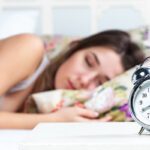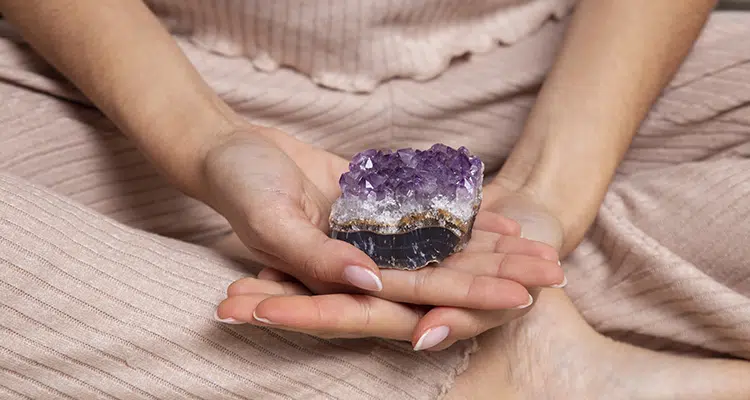How to Get More REM Sleep and Wake Feeling Rested and Restored
Every stage of your sleep cycle is important but REM sleep is arguably the deepest and most restorative. Your brain performs several important functions during this stage of sleep from sorting newly learned information and consolidating memories to processing emotions. REM sleep is vital for healthy brain development. It’s also when you dream.

The average person experiences between 3 and 5 REM cycles of sleep per night, with each episode getting increasingly longer. Your last and longest REM cycle usually lasts about 60 minutes. Healthy adults spend as much as 25% of their entire time asleep in the REM sleep stage. If you get the CDC’s recommended 7 to 9 hours of sleep every night, your total REM stage sleep should average between 90 and 120 minutes.
But what if you’re not getting enough sleep, in general, and therefore, are missing this mark for time spent in REM sleep? Can you get more REM sleep and improve your overall sleep quality? Keep reading to find the answers to these questions and others related to increasing your REM sleep and waking to feel more rested, restored, and focused.
Content
What REM Sleep Is and Why It’s Important
We already stated that REM sleep is the last stage in your sleep cycle and plays a key role in dreaming, memory consolidation, information processing, and emotional regulation. Without enough REM sleep, you may experience daytime fatigue, mental fog, and difficulty concentrating, among other unpleasant side effects.
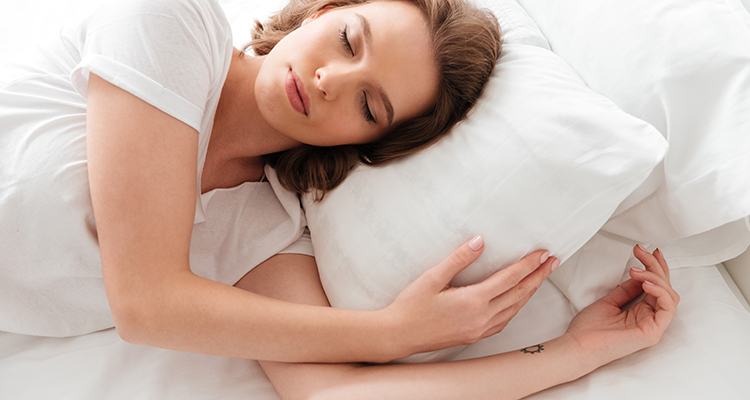
On average, adults should spend between 90 and 120 minutes total in the REM sleep stage each night. To put this in perspective, infants spend almost 8 hours every day in REM sleep as their bodies work to grow and develop. As you can see, this sleep stage promotes healthy cognitive development and facilitates learning.
REM sleep usually occurs about 90 minutes after you first fall asleep. This first stage lasts for approximately 10 minutes, with each stage lasting progressively longer. REM stands for rapid eye movement. During this time, your eyes move rapidly back and forth beneath your closed eyelids. Your brain wave activity also increases, more closely resembling a state of wakefulness. This is one reason why many people experience vivid dreams during the REM sleep cycle. Although your breathing and heart rate increase during this time, your physical body and muscles enter a state of partial paralysis, preventing you from acting out while dreaming.
This is all in stark contrast to NREM (or non-rapid-eye movement sleep) where your breathing, heart rate, eye movements, and brain activity slow down. NREM sleep accounts for between 75% and 80% of your total time spent sleeping. Your first NREM sleep cycle usually lasts between 70 and 100 minutes. Similar to the REM sleep stage, each NREM cycle increases in length as the night progresses, with later stages lasting as long as 120 minutes.
What Factors Affect REM Sleep?
The amount and timing of your REM sleep cycle are regulated by several different functions in the body. The most important factor is your circadian rhythm. This internal clock synchronizes everything from your sleep-wake cycle to your internal body temperature. It also helps promote when REM sleep occurs throughout the night. The amount of REM sleep you get is controlled homeostatically. That means that your body naturally tries to achieve a certain amount of REM sleep and will make the necessary adjustments to do so.
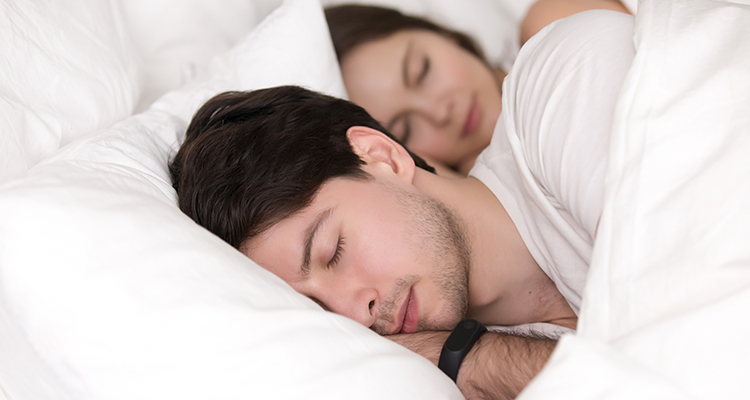
Several factors can affect both the quality and duration of your REM sleep stage. Studies suggest that individuals with depression and certain anxiety disorders experience their first stage of REM sleep earlier than most people (before 90 minutes) and it lasts longer (more than 10 minutes). Certain antidepressant medications can potentially suppress your REM sleep, although the potential side effects are still unknown.
Sleep disorders can also shorten the length of your REM sleep including insomnia. Sleep apnea, a serious sleep disorder marked by periods of stopped breathing, can cause interruptions in sleep, therefore reducing the amount of time a person spends in the REM sleep stage. In contrast, REM sleep behavior disorder prevents some people from experiencing the normal muscle paralysis that healthy sleepers experience. People with this rare sleep disorder often act out physically and sometimes violently during their dreams, injuring themselves and others. Narcolepsy patients may fall asleep suddenly, immediately entering the REM sleep cycle and severely limiting the duration of deep sleep they experience.
How to Get More REM Sleep
You may be missing out on valuable REM sleep for a variety of reasons. The most common include a shortened sleep duration and waking up frequently throughout the night. Both of these situations can prevent your brain and body from entering the restorative REM sleep cycle as often or for as long as recommended.
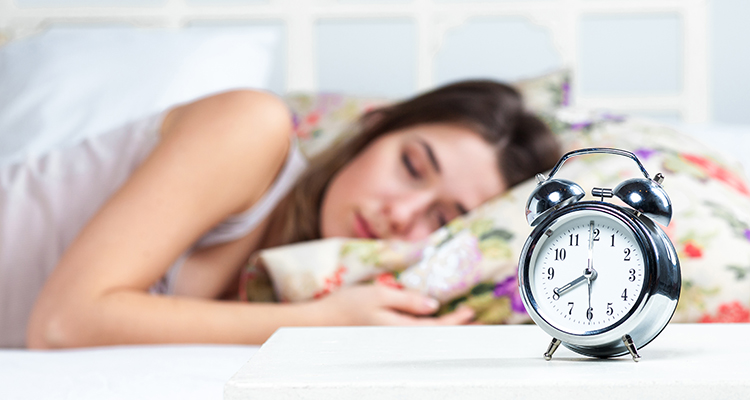
The good news is that with a little tweaking to your lifestyle and sleep habits, you can get more REM sleep and start waking to feel more energetic, focused, and well-rested.
Create a Consistent Sleep Schedule
One of the easiest and most effective ways to align your circadian rhythm and help your body naturally achieve the desired amount of REM sleep is to set a sleep schedule and stick to it. As adults, it can be difficult to go to bed and wake up at the same time each day. Work and family obligations plus stress and travel all result in late nights and early mornings.
But, whenever possible, try to go to bed around the same time every night and wake up at the same time every morning. This includes weekends and holidays. Before long, you will find yourself naturally getting tired around the same time at night and waking without the need for an alarm clock. This increases the likelihood that you’ll achieve between 7 and 9 hours of sleep per night, and in turn, spend between 90 and 120 minutes in REM sleep.
Avoid Stimulants Late in the Day
Stimulants like caffeine, nicotine, and alcohol can all interfere with your ability to fall and stay asleep at night. Waking up frequently throughout the night is a guaranteed way to interrupt your body’s natural sleep cycles, and reduce the amount of REM sleep you get.
Avoid drinking caffeinated beverages too late in the day. This includes coffee, tea, soda, and certain sports and energy drinks. While alcohol might make you feel sleepy at first, once these initial side effects wear off, you’re more likely to wake up feeling restless. Smokers should consider quitting for myriad reasons, however, disrupted sleep is one of them.
Develop a Relaxing Night Time Routine
What you do leading up to bedtime is as important as what occurs while you’re sleeping. If you want to get more REM sleep, start by developing a healthy nighttime routine. This includes all of the behaviors you perform approximately 60 to 90 minutes before climbing into bed.
In addition to avoiding stimulating food and drink, you should also limit stimulating or arousing behaviors. Put down your smartphone, tablet, or computer. The blue light from these digital devices can interfere with your circadian rhythm, tricking your mind into thinking you should be awake. Reduce stress and anxiety before bed by drinking soothing tea, meditating, reading a book, or writing in your journal. Over time, your body will recognize these habits and activities as cues for sleep. Now, you’ll feel more prepared for sleep when you climb into bed and be better able to enter deep sleep, including the REM sleep stage.
Create an Ideal Sleep Environment

Speaking of climbing into bed, your sleep environment plays an important role in your ability to achieve quality sleep that includes enough REM sleep. Invest in quality bedding including a supportive mattress, comfortable pillows, and breathable sheets. Reduce the amount of light and noise disturbances as much as possible. You can achieve this with a sound machine and room-darkening shades.
Remove clutter from your bedroom. When your sleep space is disorganized or messy, it can be difficult for your mind to shut off and relax enough to fall asleep. Your bedroom should also be the ideal temperature – between 60 and 67 degrees Fahrenheit. This prevents you from waking up with night sweats from being too hot or reaching for the covers because you’re too cold.
Avoid Lying Awake in Bed for Too Long
While it’s important to create a bedroom oasis designed for sleep, it’s also important to limit the types of activities you perform here. For example, eating, working, or watching television in bed sends signals to your brain that it’s okay to be awake and alert in bed. Instead, you want to train your brain and body to associate the bedroom with sleep. Your bed should only be used for two things – sleep and sex.
If you find yourself lying awake for more than 15 minutes, instead of tossing and turning, get up and get moving. Don’t turn on any bright lights or grab your phone. Instead, perform a relaxing, calming activity in the dark or dim light. For example, perform a short meditation or breathing exercise or walk around your living room. Once you feel tired enough to fall asleep, return to bed. Repeat this same routine until you successfully fall asleep within 15 minutes. Doing so helps solidify the connection between your bed and sleep, increasing the likelihood that you sleep long enough to get the recommended amount of REM sleep.
Exercise Regularly
One way to ensure that you’re tired enough to fall asleep at night is to exercise daily. Not only is this beneficial for your overall health and well-being, but physical activity prepares your body and mind for sleep. Start your day off right with a workout or brisk walk that boosts energy levels, improves your mood, and increases alertness. By the time your day winds down, you’ll feel increasingly tired and ready for bed.
Studies show that exercise can help decrease insomnia symptoms, therefore improving sleep quality and resulting in more REM sleep. Avoid exercising too late in the day, which may have adverse effects, leaving you aroused and too alert to fall asleep.
Stop Taking Sleep Aids
Certain sleep aids and medications are a short-term solution to a bigger problem. Even if a sleeping pill helps you fall asleep initially, it could be doing more harm than good for your REM sleep totals. Some doctors prescribe antipsychotic and antidepressant medications to help ease anxiety and promote sleep. Unfortunately, these same medications can either reduce or completely suppress REM sleep. Once you stop taking them, you may also experience REM rebound.
Although some people need these medications to treat more serious issues than lack of REM sleep, it’s important to weigh the pros and cons. If lack of REM sleep is impacting your life more than the condition these medications are treating, you may want to reconsider taking them or ask your doctor about lowering the dose.
Consider Natural Supplements
Instead of turning to prescription medications or even OTC sleep aids to get more REM sleep, why not consider natural supplements and other holistic approaches? For example, a melatonin supplement can help promote relaxation before bed and induce sleep. Melatonin is your body’s natural sleep hormone. You can also consider a magnesium supplement. Magnesium activates the body’s parasympathetic nervous system which is responsible for relaxation and calm.
You can also use essential oils and scents proven to reduce stress and anxiety while increasing relaxation. Popular scents include lavender, ylang-ylang, and chamomile. Use an essential oil diffuser to disperse these scents into your bedroom at night or a fabric spray for your bedding.
Increase Light Exposure During the Day

Although you want to decrease light exposure at night (especially blue light), increasing how much sunlight and artificial light you get during the day can improve your sleep quality and lengthen REM sleep duration. Research shows that light exposure at night negatively affects REM sleep patterns. In turn, getting adequate light exposure during the day can help regulate your circadian rhythm and melatonin levels.
Spend at least 30 to 40 minutes each day outdoors. Even on a cloudy day, enough UV from the sun breaks through to make a significant difference in your overall mood and sleep. If you’re forced indoors, consider natural light from a nearby window or a light machine. These devices are used in light therapy to help balance a person’s sleep-wake cycle and restore healthier, more consistent sleep patterns.
Identify Underlying Sleep Disorders
The secret to unlocking more REM sleep may be hidden within an undiagnosed sleep disorder. As many as 70 million Americans are currently living with a sleep disorder, with the most common being insomnia and sleep apnea. Not only is an undiagnosed sleep disorder dangerous but it could be causing a variety of other health issues.
If the lack of REM sleep in your life is caused by frequent awakenings throughout the night or a shortened sleep duration, a sleep disorder could be to blame. Consult with your primary doctor or a sleep specialist to find out what’s causing your poor sleep quality and what treatment options are available.
The Dangers of Not Getting Enough REM Sleep

If you’re not getting enough REM sleep and you think it’s no big deal, think again. On its own, chronic sleep deprivation can cause a long list of negative side effects including increased risk of illness, a weakened immune system, mood swings, and impaired cognitive function, just to name a few. But when you don’t spend enough time in the REM sleep stage, you’ll notice significant impairments and side effects in the following areas.
- Memory consolidation
- Pain response
- Accuracy
- Regulating emotions
- Brain development
- Motor skills
- Creativity
- Learning abilities
Some research also suggests that a lack of REM sleep can increase a person’s risk of developing dementia later in life.
You may need intervention from a sleep specialist or doctor if you’re experiencing excessive daytime drowsiness and impaired thinking or mobility. Try keeping a sleep diary that documents some of your symptoms, as well as your sleep schedule. An expert can detect unhealthy sleep patterns and use this information to create a treatment plan. This is also the first step in identifying an underlying sleep disorder. In some cases, treating this condition will help you achieve healthy levels of REM sleep.
Enjoy the Benefits of Increased REM Sleep

Every stage of your sleep cycle is important, but REM sleep is essential for cognitive function, memory prowess, learning, and mood regulation. If you notice a change in any of these areas, it might be due to a lack of REM sleep. Try incorporating some of these lifestyle changes into your daily routine and increase the amount of time spent in REM sleep.
Looking to improve your overall sleep quality? Click here and let us help you get started.



